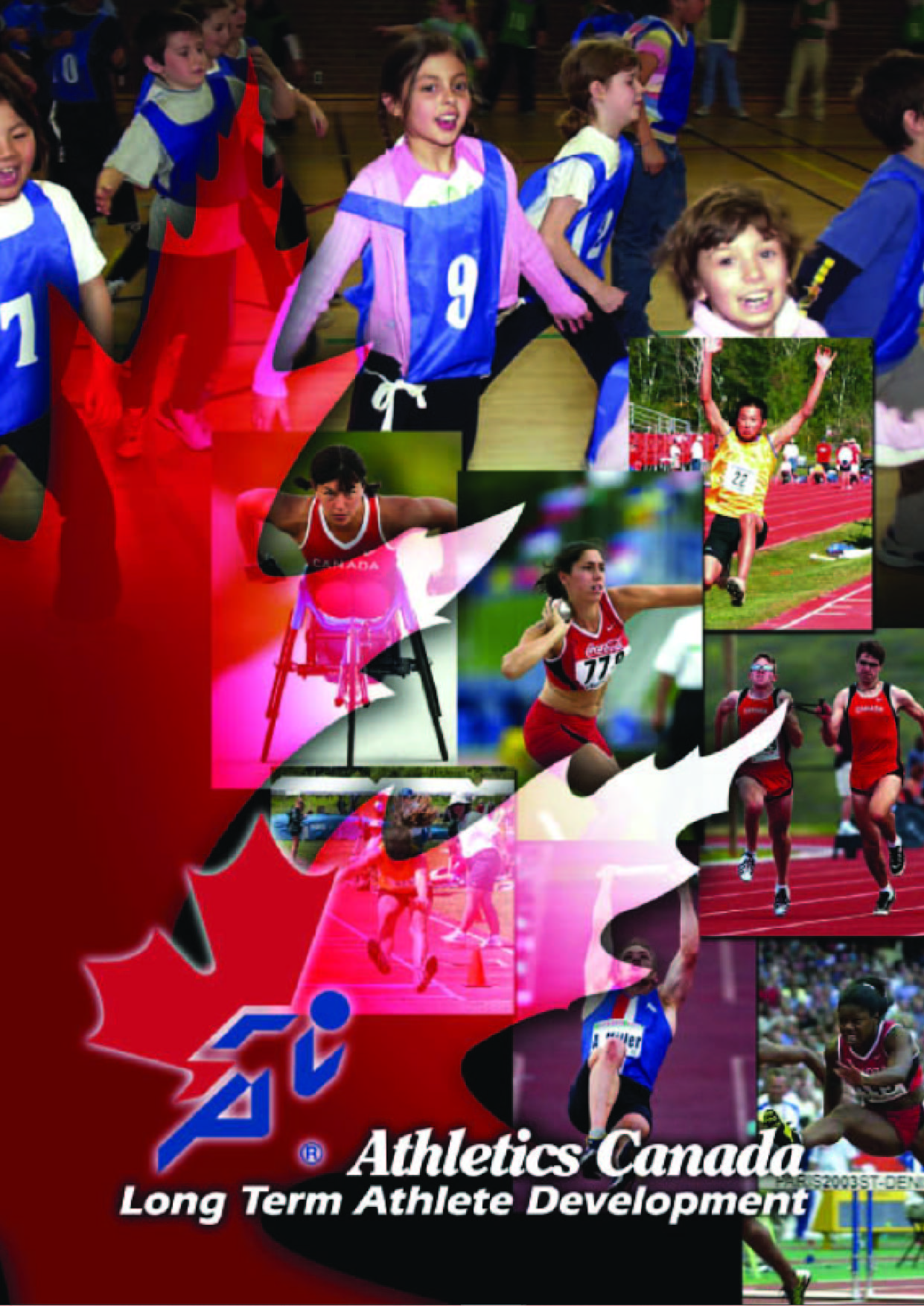Why we need a Long Term Athlete Development Model
The current system for Canadian athlete development emphasizes winning and competing, instead of maximizing the windows of accelerated adaptation to training and developing fundamental sport skills. The current emphasis on outcome (winning) as opposed to process (skill development) is seen as a shortcoming in the Canadian sport system. Such practices may lead to one-sided preparation, early burn out, lost potential or over-training as noted through the practices identifi ed by the Canadian Sport Centres LTAD Expert Group.
The development and implementation of the LTAD model will enable Athletics Canada to positively effect the development of athletes in track and fi eld. Introducing young athletes to fundamental motor skills at an early stage provides them with the opportunity to perfect their skills before demanding competitive schedules are introduced and winning becomes an important training outcome. Numerous sport organizations in Canada and many other countries around the world are now showing signifi cant interest in a LTAD model. Investment in the implementation of LTAD will secure long term success for Athletics by using this strategy to infl uence delivery. Coaches are urged to become familiar with the maturation principles for young athletes and apply these principles to training, competition and recovery protocol. In practice, all coaches working with young people have to concern themselves with the health and well being of the athlete and their development.
The Long Term Athlete Development Framework
The LTAD Framework is a sport development framework. It is a system of training, competition and recovery based on developmental age or maturity level rather than the chronological age of an individual.
The implementation of sport programs that follow a LTAD model will enable coaches to develop individualized programs based upon each individual and take advantage of the critical periods of accelerated adaptation to training. It will also ensure that athletes develop to their full potential. The LTAD framework is athlete-centred, coach-driven and supported by administration, sport science and sponsors.
The general Canadian LTAD model suggests that athletes will move through 7 stages of development on their way to optimal elite performance. The Athletics Canada LTAD model is a 9-stage process that takes into account two additional stages related to the late specialization nature of Athletics. The additional stages are a ‘Learning to Compete’ stage, and a ‘Winning for a Living’ stage which acknowledge that some elite athletes will have the opportunity to compete professionally.
It is important to note that the Active for Life Stage can be entered at any time. The Active for Life Stage provides sports with a guide to ensure that opportunities for continued participation are provided for those who do not wish/are unable to progress through all the Stages.
The entry level to Athletics can span many years and Athletics is considered to be a “late entry” sport. Children may show an aptitude for sport at very young ages but to compete at the elite level requires long term development targeted towards peak performance at physical maturity.
It is also desirable to screen children against preestablished criteria as they enter sport. This practice should allow young athletes to progress through the developmental stages and stabilize skills. Such actions should enhance future performance. As athletes develop coaches will identify the event group and specific event best suited to the talent of each athlete. Retention of each individual is essential, as it will increase the opportunity for athletes to attain excellence over time.
Trainability – Applying the Long Term Athlete Development Model
Adaptation
refers to changes in the body as a result of a stimulus that induces functional and/or morphological changes in the organism. The degree of adaptation is dependent on the genetic endowment of an individual. However, the general trends or patterns of adaptation have been identified by physiological research and various adaptation processes such as adaptation to muscular endurance or maximum strength have been defined.
Trainability
refers to the faster adaptation to stimuli and the genetic endowment of athletes as they respond individually to specific stimuli and adapt to it accordingly. Trainability has been defined as the responsiveness of developing individuals to the training stimulus at different stages of growth and maturation.
A critical period of development
refers to the point in the development of a specific capacity when training has an optimal effect. Other factors are readiness and critical periods of trainability during growth and development of young athletes, where the stimulus must be timed to achieve optimum adaptation with regard to motor skills, muscular, and/or aerobic power.











